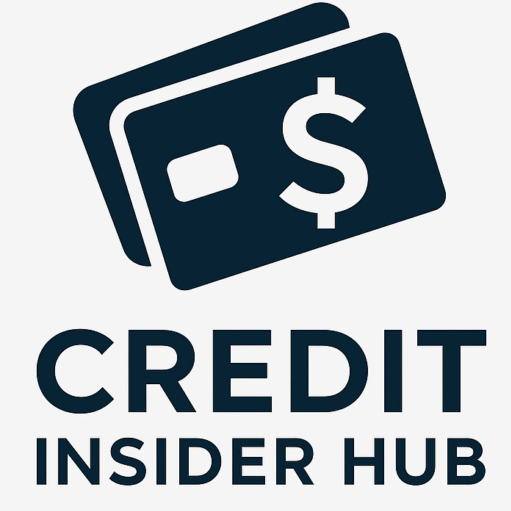If you’ve ever asked yourself, can you file bankruptcy just on credit cards? you’re not alone. Many find themselves overwhelmed by credit card debt and wondering about their options. Let’s dive into this topic and explore what it really means for your financial future.
Understanding credit card debt and its impact
Understanding credit card debt is crucial for managing your finances. Credit card debt typically occurs when you borrow money through credit cards and fail to repay the amount due on time. This can lead to high interest rates and growing balances, making it challenging to pay off what you owe.
How Credit Card Debt Accumulates
When you use a credit card, you are essentially taking out a loan from the credit card issuer. If you do not pay your balance in full each month, interest begins to accrue. High-interest rates can significantly increase your total debt over time, especially if only the minimum payment is made.
The Impact on Your Financial Health
Having high credit card debt can negatively affect your credit score. Lenders view high debt-to-income ratios as a risk, which may make it harder to obtain future loans or credit. The stress of managing credit card payments can also impact your overall well-being.
Recognizing the Signs of Problematic Debt
If you find yourself relying on credit cards for everyday expenses or using one card to pay off another, it’s a sign of problematic debt. Paying late fees or only making minimum payments can keep you in a cycle of debt that is difficult to escape.
Strategies to Manage Credit Card Debt
To combat credit card debt, create a budget that prioritizes debt repayment. Consider consolidating debts or negotiating lower interest rates with your credit card issuers. By addressing debt proactively, you can regain control over your finances.
What bankruptcy means for credit card debts
Bankruptcy can be a complex topic, especially when it comes to credit card debts. When individuals file for bankruptcy, they seek relief from their debts, which can include credit card balances. However, the type of bankruptcy you choose can greatly affect how these debts are handled.
Types of Bankruptcy
There are primarily two types of bankruptcy individuals can file: Chapter 7 and Chapter 13. In Chapter 7 bankruptcy, most unsecured debts, including credit cards, can be discharged. This means you won’t have to pay them back. In contrast, Chapter 13 bankruptcy involves a repayment plan where you pay back a portion of your debts over 3 to 5 years.
The Discharge of Credit Card Debt
When credit card debt is discharged in bankruptcy, you are no longer legally obligated to pay it. This can provide immediate financial relief and help you start over. However, it’s important to remember that not all types of debts can be discharged.
Impact on Your Credit Report
Filing for bankruptcy can significantly impact your credit score. A bankruptcy can remain on your credit report for up to 10 years, making it difficult to obtain new credit or loans. Consequently, managing your financial habits post-bankruptcy is crucial to rebuilding your credit.
Eligibility Requirements
To qualify for bankruptcy, you must meet certain criteria, such as demonstrating that your debts exceed your income or that your financial situation is beyond your control. You might be required to complete credit counseling before filing for bankruptcy.
Seeking Legal Advice
Consulting with a finance or bankruptcy attorney can help clarify the implications of bankruptcy on your credit card debts. An attorney can also help guide you through the process, ensuring you make informed decisions.
Types of bankruptcy you can consider

When facing overwhelming debt, understanding the types of bankruptcy available can help you make informed decisions. Each type has different qualifications, processes, and outcomes for handling your debt.
Chapter 7 Bankruptcy
Chapter 7 bankruptcy, also known as liquidation bankruptcy, is designed for individuals and businesses with limited income. It allows you to eliminate most of your unsecured debts, including credit card debts, in a relatively short time, usually within six months. However, you may have to liquidate certain assets to pay off creditors.
Chapter 13 Bankruptcy
Chapter 13 bankruptcy is intended for individuals who earn a regular income and can repay a portion of their debts over time. You create a repayment plan that lasts three to five years, allowing you to keep your assets while paying off debts. This option is beneficial for those looking to avoid foreclosure on their home.
Chapter 11 Bankruptcy
Chapter 11 bankruptcy primarily applies to businesses, but individuals with significant debts can also use it. This type allows for reorganization of debts while maintaining control of the business. It’s more complex and usually requires a detailed plan to be approved by the court.
Chapter 12 Bankruptcy
Chapter 12 bankruptcy is designed specifically for family farmers and fishermen. It allows them to propose a repayment plan to keep their operations running while paying off debts over three years. This type recognizes the unique financial issues these industries face.
Choosing the Right Bankruptcy
Deciding which type of bankruptcy to file can be challenging. Factors such as income, amount of debt, and your assets will play significant roles in your choice. Consulting a qualified attorney can provide guidance tailored to your specific financial situation.
Eligibility requirements for credit card bankruptcy
When considering credit card bankruptcy, it’s important to know the eligibility requirements that govern the process. These requirements can vary depending on the type of bankruptcy you plan to file.
Income Limits
To qualify for Chapter 7 bankruptcy, you must pass the means test, which compares your income to the median income for a household of your size in your state. If your income is below the median, you may be eligible. If it’s above, you need to prove you don’t have enough disposable income to repay your debts.
Debt Limits
Although there is no strict limit on the amount of credit card debt you can have to file for bankruptcy, Chapter 13 has a cap on the amount of unsecured debt (like credit cards) and secured debt (like a mortgage or car). Make sure to stay informed about the current limits set by bankruptcy law.
Credit Counseling
Before filing for bankruptcy, you are required to complete credit counseling from a government-approved organization. This counseling must be done within 180 days before you file to ensure you understand your options and the implications of bankruptcy.
Identification and Documentation
You will need to provide proof of your identity, which often includes a social security number and government-issued ID. Additionally, detailed documentation regarding your debts, income, expenses, and assets must be submitted.
Other Considerations
If you have filed for bankruptcy in the past, there are time restrictions on how soon you can file again. Generally, you must wait several years before you can file for a new Chapter 7 or Chapter 13 case, depending on the type of bankruptcy you previously filed.
How to file for bankruptcy on credit cards
Filing for bankruptcy on credit cards can be a complex process, but understanding the steps can make it easier. Here’s a clear guide on how to navigate this procedure.
Step 1: Evaluate Your Financial Situation
Before filing, assess your overall financial health. Compile a list of all your debts, including credit card balances, monthly expenses, and income. This will help you understand whether bankruptcy is the best option for you.
Step 2: Credit Counseling
Complete credit counseling with an approved agency. This is a requirement before filing for bankruptcy and must occur within 180 days prior to your filing. You will learn about alternatives to bankruptcy and get guidance on managing your debts.
Step 3: Choose the Type of Bankruptcy
Decide between Chapter 7 and Chapter 13 bankruptcy. Chapter 7 allows for faster debt relief by discharging debts, while Chapter 13 involves creating a repayment plan where you pay back a portion of your debts over three to five years.
Step 4: Gather Required Documents
You will need to collect various documents, including pay stubs, bank statements, tax returns, and a list of all creditors and their addresses. This documentation will be necessary for the bankruptcy petition.
Step 5: Complete the Bankruptcy Petition
Fill out the bankruptcy petition and schedules accurately. This includes providing detailed information about your debts, income, and expenses. You can find forms on your local bankruptcy court’s website or through legal resources.
Step 6: File the Petition
Once your forms are complete, file your petition with the bankruptcy court in your area. Pay the filing fee, or request a fee waiver if you can’t afford it. Once filed, an automatic stay is put in place that stops creditors from collection actions.
Step 7: Attend the 341 Meeting
After filing, you will be required to attend a 341 meeting of creditors. This is an opportunity for creditors to ask questions about your financial situation. Be prepared to provide truthful answers and bring any required documents.
Step 8: Complete Required Courses
Complete a debtor education course after filing. This course will help you understand how to manage your finances better and will be necessary to receive a discharge of your debts.
Step 9: Receive Your Discharge
Once all steps are completed and requirements are met, the court will discharge your unsecured debts, including credit card debt, under Chapter 7 or confirm your repayment plan under Chapter 13.
Consequences of filing bankruptcy on credit cards

Filing for bankruptcy on credit cards can have significant consequences for your financial future. It’s essential to understand what happens before making this crucial decision.
Impact on Your Credit Score
One of the most immediate consequences is the negative effect on your credit score. A bankruptcy can lower your score substantially, making credit harder to obtain in the future. This damage can last for up to ten years, affecting your ability to secure loans or even get a rental.
Loss of Certain Assets
Depending on the type of bankruptcy filed, you may have to surrender some assets. For instance, in Chapter 7 bankruptcy, non-exempt assets can be sold to repay creditors, potentially including property, vehicles, or valuable possessions.
Increased Difficulty in Obtaining Credit
After filing for bankruptcy, creditors may view you as a higher risk. You might find it more challenging to get new credit cards or loans. If you do qualify, interest rates might be much higher than before.
Long-Term Financial Planning Challenges
Bankruptcy can complicate your long-term financial planning. It may limit your options for home mortgages, personal loans, and some types of insurance. You’ll need to work on rebuilding your credit and creating a solid financial strategy moving forward.
Emotional and Psychological Effects
The emotional toll of bankruptcy should not be overlooked. Individuals often experience feelings of shame, stress, and anxiety after filing. It may take time to recover emotionally from the stigma associated with bankruptcy.
Rebuilding Your Finances
While there are consequences to filing, many individuals find that it provides them a fresh start. Establishing a budget, using secured credit cards, and making timely payments can help rebuild your credit over time. It requires dedication, but recovery is possible.
Rebuilding credit after bankruptcy
Rebuilding your credit after bankruptcy is an important step toward financial recovery. While bankruptcy can damage your credit score, it also provides an opportunity to start fresh and improve your credit situation over time.
Understand Your Current Credit Situation
The first step in rebuilding credit is to check your credit report. You can obtain a free copy of your credit report from each of the three major credit bureaus once a year. Review it for accuracy and make note of any negative items, including the bankruptcy itself, and any credit accounts.
Create a Budget
Developing a budget is crucial after bankruptcy. Track your income and expenses to ensure you live within your means. Redirect any extra funds toward saving or paying down debt. A solid budget helps you avoid accumulating more debt and supports healthy financial habits.
Obtain a Secured Credit Card
Consider applying for a secured credit card. This type of card requires a cash deposit that becomes your credit limit. Using a secured card responsibly can help you rebuild your credit score by demonstrating good payment behavior.
Make Payments on Time
Timely payments on your bills and any new credit accounts are essential. Payment history is one of the biggest factors in your credit score. Always aim to pay at least the minimum amount due each month to stay in good standing.
Consider Credit Builder Loans
Credit builder loans are small loans designed specifically to help you build credit. The loan proceeds are held in a bank account until you have paid off the loan. These payments are reported to credit bureaus, helping to improve your credit history.
Keep Credit Utilization Low
Try to keep your credit utilization ratio under 30%. This means using less than 30% of your available credit. High utilization can negatively impact your credit score, even if you make payments on time.
Monitor Your Progress
Regularly monitor your credit score to see how your actions affect it. Many online services provide free credit score tracking. Stay aware of your credit status and make adjustments to your rebuilding plan as needed.
Be Patient and Stay Committed
Rebuilding credit takes time, especially after bankruptcy. Be patient and remain committed to responsible financial habits. With dedication and consistency, you can work toward improving your credit score over the years.
Alternatives to filing bankruptcy
Filing for bankruptcy is a significant decision with long-term consequences. Fortunately, there are several alternatives to filing bankruptcy that can help you manage your debt without taking this step.
Debt Consolidation
Debt consolidation involves combining multiple debts into a single loan with a lower interest rate. This can make payments more manageable and help you pay off the debt faster. You can secure a consolidation loan from a bank, credit union, or online lender.
Debt Settlement
Debt settlement involves negotiating with your creditors to reduce the total amount you owe. While this option can significantly lower your debt, it may also negatively impact your credit score. Consider seeking help from a reputable debt settlement company.
Credit Counseling
Credit counseling agencies can help you create a budget and negotiate with creditors on your behalf. These organizations provide services to help you manage your money and can assist with a debt management plan without the need for bankruptcy.
Repayment Plans
If you are struggling with debt, many creditors are open to establishing a repayment plan that allows you to pay off your debt over time. This may involve lower monthly payments or extended payment periods.
Income-Driven Repayment Plans
For federal student loan borrowers, income-driven repayment plans can make payments more manageable. These plans base your monthly payment on your income and family size, which can help if you’re facing financial hardship.
Cutting Expenses
Take a close look at your budget and identify areas where you can cut expenses. By reducing non-essential spending, you can free up more money to pay down debts and avoid bankruptcy.
Seeking Financial Assistance
In some cases, local charities, nonprofit organizations, or government agencies can provide financial assistance or resources. Research available programs in your area that might offer help with bills or debt management.
Building an Emergency Fund
Establishing an emergency fund can prevent debt accumulation in the future. By having savings set aside, you can avoid using credit cards for emergencies, which can help you stay out of debt.
Steps to avoid accumulating more debt

To prevent accumulating more debt, it’s vital to adopt effective financial habits. Following these steps can help you manage your finances better and avoid falling back into the debt cycle.
Create a Realistic Budget
A detailed budget is essential for tracking your income and expenses. Break down your spending into categories like housing, food, transportation, and entertainment. This clarity helps you allocate funds wisely and identify areas for potential savings.
Use Cash for Purchases
Using cash instead of credit cards can help control spending. When you use cash, it’s easier to stick to your budget. Consider implementing a cash envelope system for different spending categories to limit your expenses.
Establish an Emergency Fund
Building an emergency fund can prevent the need for credit when unexpected expenses arise. Aim to save at least three to six months’ worth of living expenses in a separate account. This cushion reduces reliance on credit cards for emergencies.
Limit Credit Card Usage
While credit cards can be useful, excessive reliance on them can lead to debt accumulation. Consider keeping your cards at home or setting a strict limit on their use. Only use credit cards for planned purchases that you can pay off immediately.
Track Your Spending
Regularly tracking your expenses can help you identify unnecessary spending patterns. Use apps or spreadsheets to log daily purchases. This awareness can motivate you to stay within your budget and cut back on non-essential items.
Make Payments on Time
Ensure you pay bills and credit card statements on time to avoid late fees and high-interest charges. Set up notifications or automatic payments for repeating expenses to maintain a good payment history.
Seek Professional Financial Advice
If managing finances feels overwhelming, consider seeking help from a financial advisor or credit counselor. These professionals can provide guidance tailored to your financial situation and help you create a sustainable plan.
Review and Adjust Regularly
Life changes, and so will your financial situation. Regularly review your budget and financial goals. Adjust as needed to stay aligned with your current income, expenses, and lifestyle changes.
The importance of budgeting during bankruptcy
Budgeting during bankruptcy is crucial for regaining control over your finances. It creates a clear picture of your income and expenses, helping you make informed decisions.
Understanding Your Financial Situation
Creating a budget allows you to assess your current financial situation accurately. By listing all sources of income and necessary expenses, you can identify how much money you have available after meeting your basic needs.
Prioritizing Essential Expenses
When budgeting during bankruptcy, it’s important to prioritize essential expenses like housing, utilities, food, and transportation. This ensures that you can maintain your basic living standards while working toward financial recovery.
Avoiding Further Debt
A budget helps you avoid accumulating more debt by controlling spending. By knowing how much you can spend each month, you can prevent overspending and avoid relying on credit cards or loans.
Tracking Spending Habits
Tracking your spending can reveal patterns and areas where you can cut back. This awareness can help you make adjustments to your budget and align your spending with your financial goals.
Setting Realistic Financial Goals
While navigating bankruptcy, setting realistic financial goals is key. Your budget should include short-term and long-term goals. Examples include paying down specific debts or building an emergency fund.
Improving Financial Habits
Budgeting is an opportunity to improve your overall financial habits. It encourages you to think critically about your spending choices and prioritize savings, leading to more responsible financial behaviors in the future.
Building a Foundation for Recovery
A solid budget can lay the foundation for rebuilding your credit and financial health after bankruptcy. By sticking to a budget, you can demonstrate responsible financial behavior as you work to recover.
Seeking professional advice before bankruptcy
Seeking professional advice before filing for bankruptcy can be a critical step in ensuring you make informed decisions. Consulting with experts can help you understand your options and the implications of bankruptcy.
Understanding Your Options
A qualified financial advisor or bankruptcy attorney can explain the different types of bankruptcy available, such as Chapter 7 and Chapter 13. They can help you determine which option might be best based on your financial situation.
Evaluating Your Financial Situation
Professionals can conduct a thorough review of your financial circumstances. They will help you assess your debts, income, and assets to better understand the potential impacts of filing for bankruptcy.
Exploring Alternatives
In many cases, there may be alternatives to bankruptcy that could help you manage your debt more effectively. A financial advisor can guide you through options such as debt consolidation, settlement, or credit counseling.
Legal Implications
Filing for bankruptcy has legal consequences. Speaking with an attorney can provide insight into how the law affects your case, including what debts can be discharged and what assets you may retain.
Planning for the Future
Consulting a professional can also assist you in preparing for the future after bankruptcy. They can offer advice on rebuilding your credit and establishing better financial habits moving forward.
Understanding Costs
Bankruptcy can involve various fees and costs. A financial expert can give you a clear breakdown of what you might expect to pay, enabling you to prepare effectively.
Emotional Support
Seeking professional advice not only provides practical assistance but also offers emotional support. Facing financial difficulties can be stressful, and having a supportive expert can help ease your concerns.
Real-life stories of bankruptcy and credit cards

Real-life stories of bankruptcy and credit card debt can provide valuable insights into the challenges and recovery processes of individuals facing financial difficulties. These narratives highlight the underlying issues that lead to bankruptcy and the steps taken to overcome them.
Case Study: John’s Journey
John was a recent college graduate who relied heavily on credit cards to manage his living expenses. He had multiple cards with high balances, and the interest quickly accumulated. When a sudden job loss occurred, he found it impossible to keep up with the payments. After consulting with a financial advisor, John decided to file for Chapter 7 bankruptcy. This process allowed him to discharge most of his credit card debt, giving him a fresh start.
Case Study: Sarah’s Experience
Sarah, a single mother, faced financial strain due to medical bills and fluctuating income. She was overwhelmed by her credit card debts, which were overloading her monthly budget. Rather than filing for bankruptcy immediately, she sought help from a credit counseling service. They helped her negotiate lower payments and set up a debt management plan. Over time, she managed to pay off her debt without declaring bankruptcy.
Case Study: Mark’s Turnaround
Mark accumulated significant credit card debt during a failed business venture. After realizing he couldn’t manage his payments, Mark sought legal advice. He filed for Chapter 13 bankruptcy, which allowed him to keep his assets while following a court-approved repayment plan. This experience taught him to budget more wisely and avoid relying on credit for every purchase.
Lessons Learned
These stories emphasize the importance of understanding your financial situation before it escalates. Seeking help early, whether through counseling or professional advice, can lead to better outcomes. Each individual’s journey varies, but these real-life examples show that recovery is possible with the right support and strategies.







